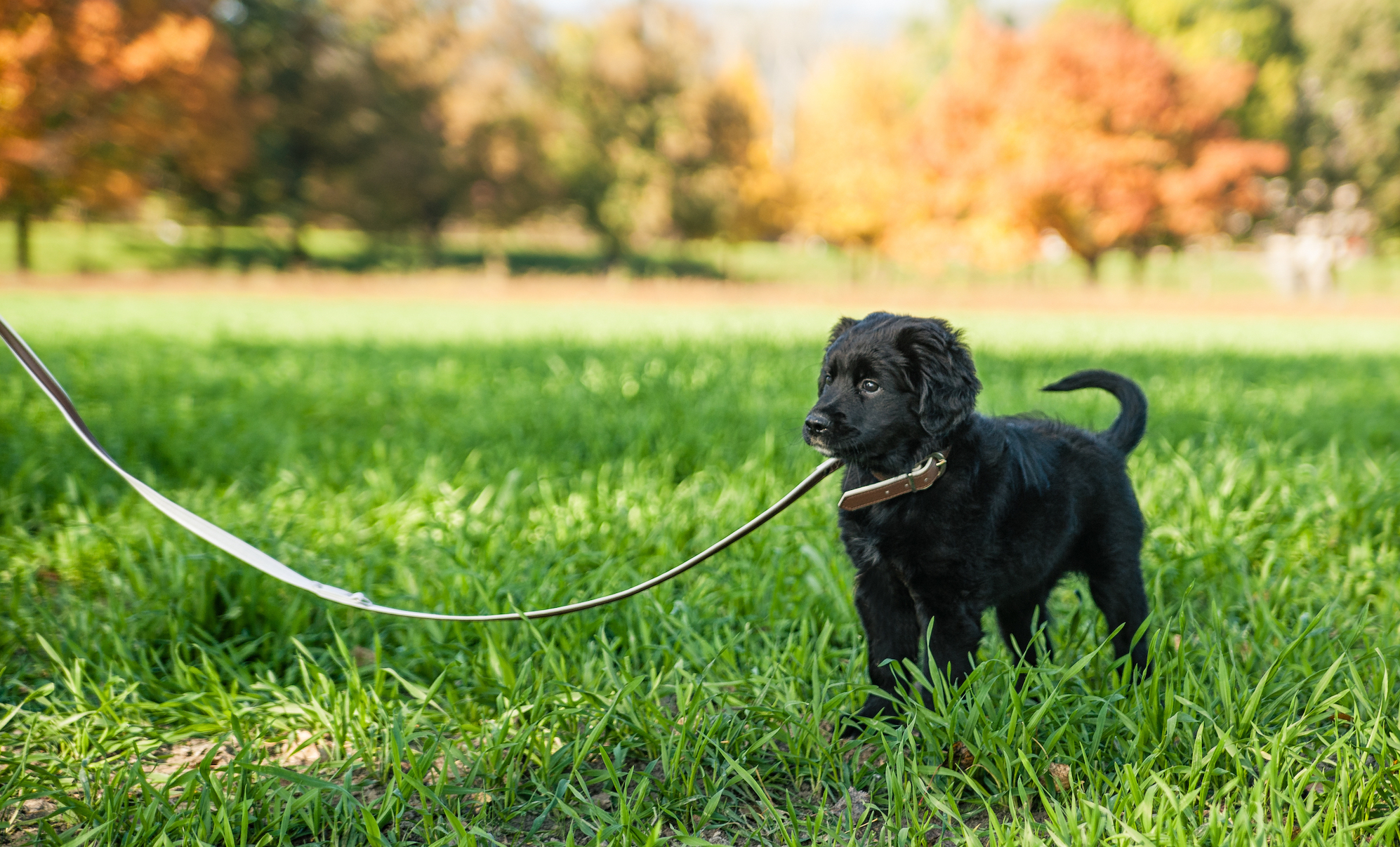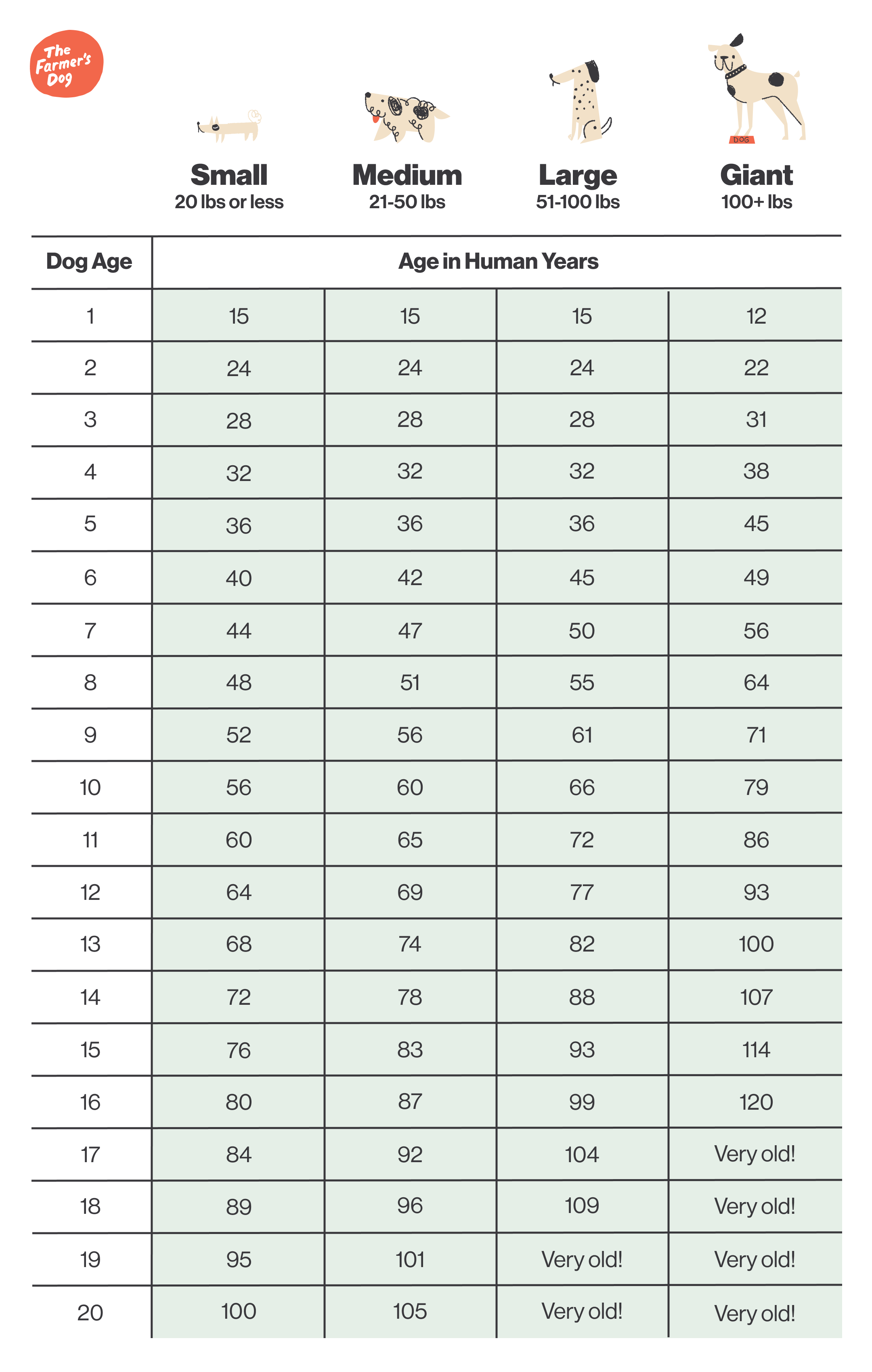Everyone knows that if you want to calculate your dog’s age relative to a human, you just multiply their age by 7, right? The thing is, this timeworn piece of conventional wisdom doesn’t hold up. There are many ways to understand your dog’s age, and they’re all more complex than multiplying by 7.
“I think this belief still exists, in part, because it is easier to understand than what we now recognize as being more accurate,” says Brian Collins, DVM, senior lecturer at Cornell University College of Veterinary Medicine. “There are charts for determining what we call a dog’s physiologic age in human years. They are very helpful to guide us in understanding a particular dog’s stage of life and how best to care for them both at home and in the vet office.” (See below for a dog-to-human-years chart.)
A dog’s life stages
It makes sense that we want to map our dogs’ lives to our own. All mammals go through a similar set of life stages, and we know that our own needs change as we go through those stages, so naturally we want to understand what “age” our dogs are to care for them better.
Here are dogs’ general development stages:
- Puppy: From birth to 1 year (depending on when rapid growth ends)
- Young adult: 1 year to 3 to 4 years depending on type of dog (this stage ends when physical and social maturation is complete)
- Mature adult: 3 to 4 years to the beginning of the last 25% of the dog’s expected lifespan
- Senior: The last 25% of expected lifespan
If a dog lives longer than the expected lifespan for their size and breed, they’re considered “geriatric.”
Though they all go through similar stages, different types of dogs have varying lifespans. Smaller dogs tend to live longer than larger ones, and certain breeds are more susceptible to illness than others. Just as with humans, genetics have a significant effect on dogs’ lifespan. Plus, lifestyle factors like diet, weight, exercise, and dental health play an important role in how long a dog lives.

Mapping your dog’s age
One reason the 7-year myth doesn’t work is that although dogs’ life stages are similar to those of humans, dogs age at different rates than we do. Researchers at the University of California, San Diego developed a method for mapping dogs’ ages based on chemical changes in their DNA. They found that dogs tend to age very quickly compared to humans in their younger years, then they slow down in adulthood.
According to the research, an 8-week-old puppy is similar to a 9-month-old baby (watch out for teething in both), and a 1-year-old dog is similar to a 30-year-old human. Then the aging process slows considerably for dogs; at 4 years old, a dog is similar to a 52-year-old human. By 7, a dog is closer to a 60-year-old human, and a 12-year-old dog is similar to a 70-year-old human.
 Of course, all dogs are individuals, and lifestyle choices make a real difference. Your vet may evaluate your dog based on several factors to determine how they’re aging, including their teeth, clarity of eyes, their body condition and how their weight is distributed, their coat, and skin laxity.
Of course, all dogs are individuals, and lifestyle choices make a real difference. Your vet may evaluate your dog based on several factors to determine how they’re aging, including their teeth, clarity of eyes, their body condition and how their weight is distributed, their coat, and skin laxity.
“Just like with people, much of this is determined by our genes, but we can help maintain health, and maximize quality of life and longevity,” Dr. Collins says. “There is a lot of routine care that can help ensure that preventable conditions are addressed. One of the most important things we can do is to maintain a healthy weight throughout life; doing so has been proven to increase health and longevity.” So, to give your dog the best chance of making all their years as full and healthy as possible, watch their weight, provide regular exercise and mental stimulation, maintain their oral health, keep on top of vaccinations, parasite control, and vet visits—and feed a fresh, healthy diet!







